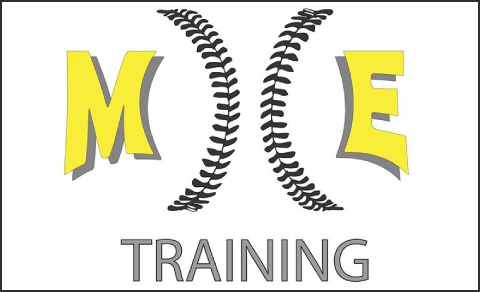Has anyone ever told you to be careful with your Creatine supplementation because it “damages your kidneys”? Or, that it really has no effect on muscle growth and is clinically unsafe? These are some of the common misconceptions in the field of exercise science. Fortunately for you, this article is giving you the real science behind Creatine.
Creatine has been the most widely studied supplement. It’s importance to muscle growth is well known, and has been backed by numerous scientific studies.
In this article, we will review how Creatine is used by your cells, why it is important for baseball, and how it feeds your muscles to grow!
 So…What is Creatine?
So…What is Creatine?
Creatine can be found in meats and fish. However, these items must be consumed in large portions to obtain a generous amount of Creatine. For this reason, Creatine supplementation is much easier, inexpensive, and more efficient to get you to your muscle-building goals during the off-season.
Creatine, which is naturally produced by the human body in the liver and pancreas, aids in replenishing our cells with ATP: the primary source of energy. As our natural phosphocreatine stores are depleted through high-intensity exercise, the ability to maintain this high-intensity decreases significantly.
Being that baseball is a sport of multiple, high-intensity bursts of movement, having an understanding on what Creatine is, and how it works, will put you ahead of other competitors.
In theory, by simply adding Creatine supplementation into your training regimen, our cells will have more phosphocreatine readily available in the blood stream so that it can be used for energy.
If our cells have more energy supplied to them, then wouldn’t we be able to sustain this high-intensity work for a prolonged amount of time? The answer is yes!
![]()
Supplementation
The most common form of Creatine that is taken as a supplement is Creatine Monohydrate (CM), although there are a ton of other Creatine supplements out on the market.
In a study done on female collegiate swimmers, taking 2g of Creatine a day did not show any performance or body composition benefits over a 6-week period. Hence, it is important to take a dose of Creatine based on a proportion of body weight (g/kg).
Creatine supplementation may be confusing because of the different phases of ingestion (loading and cycling), and there are a few out there who define these phases differently.
Simply put, the “loading” phase involves the ingestion of 0.3g/kg/day of Creatine Monohydrate for 5-7 days and 3-5 g/day once that is completed. For example, if you weigh 160 pounds (72.7kg), you would be taking 21.8g/day. This specific suggestion has shown to increase muscle Creatine stores by 10-40%.

If you supplement Creatine with protein and carbohydrates, you may see even greater results. Research suggests that loading (0.3g/kg/day) with the ingestion or protein and carbohydrates, the loading phase may only need to last for 2-3 days.
The “cycling” phase of Creatine supplementation involves the steady buildup of muscle Creatine stores, or consuming “loading” doses for 3-5 days every 3-4 weeks. Some research supports the cycling phase without any loading, and that you could see an increase in muscle size and strength when taking 6g/day for 12 weeks.
Pairing CM with other supplements has also shown to have additional effects. The best pair at improving lean body mass and strength seems to be CM and beta-hydroxy-beta-methylbutyrate (HMB).
However, as previously mentioned, adding CM with carbohydrates and/or protein can create synergistic effects on muscle Creatine retention, muscle growth, and muscle strength as well!

Summary: Is Creatine the Right Supplement for Me?
Not only does Creatine supplementation seem to have no negative side effects on the body, but it has many positive effects on muscle strength and growth. Our body naturally synthesizes Creatine, but additional supplementation can help you reach your goals a lot quicker!
If you’re a steady ballplayer or just someone who is starting to go into the gym to train for baseball, Creatine can be beneficial for both populations, and anyone in-between.
Disclaimer for college baseball players: Creatine is NOT a banned substance by the NCAA. You are allowed to independently purchase it on your own. The only rule is that your coach cannot directly supply it to you.
The current recommendation for the loading phase is taking 0.3g/kg of bodyweight for 5-7 days, and consuming a loading dose for 3-5 days every 3-4 weeks.
Although not directly related to protein synthesis, it seems that Creatine’s main ergogenic effect is that it supplies our cells with more energy to perform high-intensity activities for a longer period, which is HIGHLY important in the game of baseball.
By supplying our cells with this added energy, we give our muscles a greater ability to perform work, get stronger, and grow.
By pairing your Creatine supplementation with carbohydrates and protein, as well as splitting up your doses before/after your training session, you can see even greater increase in muscle growth and strength.
Lastly, pairing your Creatine supplementation with a good resistance training program will only give you greater results; from adolescents to adults!
If you plan on taking your game to the next level, I highly recommend taking Creatine for baseball.
Here’s a list of some companies that I would recommend: Dymatize, Muscle Pharm, Muscle Tech, and Optimum Nutrition













